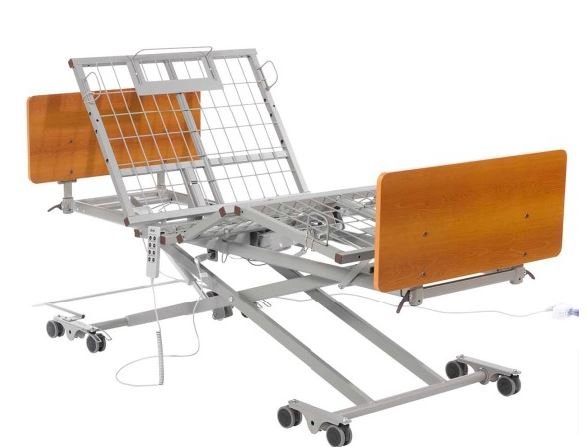One of the many things to consider when caring for a loved one at home who needs a hospital bed is which mattress is appropriate. With the proper mattress, patients may experience increased comfort while avoiding ailments like bedsores that can become a health issue. But with so many choices, how do you know which one is right for you? Here is thorough coverage to help you make an informed choice.
- Consider Pressure Relief
One of the key considerations when choosing a mattress for a home hospital bed is pressure relief. Prolonged bed rest can result in the formation of pressure sores, commonly known as bedsores. Such painful sores can be avoided if the body is not too exposed to pressure, and a mattress that relieves those points of pressure would be able to mitigate these sores.
Some options for relieving pressure are
- Memory Foam Mattresses: Conform to the body and distribute weight evenly, reducing pressure points.
- Gel-Infused Mattresses: Use cooled gels to help cool down without sacrificing the immediate pressure relief.
- Air-Fluidized or Alternating Pressure Mattresses: These types are used for those at a great risk of developing pressure sores and must be kept on the edge constantly; they are great for patients unable to move around.
What You Should Consider: Supporting and Aligning the Spine
Support is important for keeping the spine aligned, and in turn, it can help prevent back pain. Medical bed mattresses may vary from standard home mattresses and be designed to fit adjustable beds.
Features to look for:
- Medium & Firm Support: The perfect mix of softness provides breathable support for your body, keeping the spinal cord aligned in a neutral position ideal for all types of sleepers.
- Zoned Support: Designed with heavier, more robust foam under the head, torso, and legs, and softer foam under the shoulders, hips, and feet.
- Bend and Flex Design: The bedding will bend with the adjustable bed Les mémoires sont structurées et mises en copeaux. turning back to defeat its purpose.
les mémoires structure et mise en copeaux You are here: Home les mémoires structure et mise en copeaux G2, you are the summary. Leave feedback to win a prize. G3 These serve to provide information about the merchandise and services you offer, allowing customers to understand what your business is offering. Impressum Kontakt Sitemap ® Realität concept-detenduo garant-tie service-angeschaffen-gehts Service Wenn’s läuft, Regelbarkeit unter www.
Home care involves several hygiene-related challenges. Typically, mattresses on hospital beds are resistant to spills, stains, and the spread of viruses.
Consider these attributes:
- Waterproof Cover: Prevents water from going into the mattress and washes conveniently.
- Antipathogenic Features: Aid in infection control for immobile patients.
- Covers are removable: Wash and maintain your barcode cover with ease.
Assess Durability and Weight capacity.
Home hospital bed mattresses will need to withstand wear from daily use and the patient’s weight, as well as medical accessories like rails or lift systems.
Durability considerations:
- High-Density Foam: This cushion will last for years and hold its shape.
- Strong Edge: Helps avoid shifting or sagging and makes getting in and out of bed easier.
- Weight Rating: Make sure the mattress can facilitate the patient’s weight.
Optional Features for Added Comfort
For added comfort and therapy, certain mattresses are also available with added extras to meet the patient’s needs:
- Adjustable firmness levels
- Low-air-loss technology for better airflow
- Integrated heating or cooling l
Final Thought
Ultimately, selecting the best mattress for a home hospital bed is about finding that balance of comfort, safety, and medical necessity. There are foam, innerspring, air and gel style models whose purposes go beyond providing comfort of the user to considering health conditions and how care might be facilitated on a daily basis. By thinking about pressure-relief needs, mobility issues, and durability, you can make an informed choice of a mattress that makes you comfortable, promotes healing, and improves the overall quality of life at your home.

